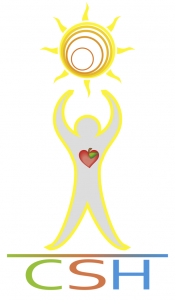Contributed by Elizabeth Polley (Teacher Candidate)
Head, heart, hands, and health – these are the four words that give 4-H its unique name[1]. What began as a small club for youth started by an Ohio principal at the turn of the 20th century has grown tremendously to become an influential, US-wide not-for-profit[2]. The original 4-H organization has in turn inspired a network of independently-run chapters in more than 50 countries worldwide[3]; in fact, 4-H Canada has its headquarters right here in Ottawa[4].
In particular, the Ontario chapter is represented province-wide by local 4-H clubs for youth ages 9 through 21[5], pursuing club projects in such diverse subject areas as agriculture, personal development, arts and crafts, outdoors and environment, and many others[6]. It also has its “Cloverbuds” program, which is designed to help children ages 6 to 8 learn about 4-H projects and values in an active, hands-on manner[7].
4-H is “a grassroots organization of leaders building leaders”[8], and its philosophy of promoting and supporting a balanced and healthy lifestyle fits in well with the creation of healthy schools on many levels. 4-H clubs, camps, and volunteer programs align with the pillars of both the Comprehensive School Health and Foundations for a Healthy School frameworks[9] by promoting learning, student engagement, leadership, physical and emotional well-being, and community involvement in their members.
4-H projects could serve as useful resources in augmenting many areas of the Ontario curriculum. Projects such as “Healthy Eating ‘Round the Clock”, which teaches participants how to prepare wholesome meals, and “A Sporting Chance”, in which participants learn to play a variety of different sports, would be fun and useful complements to the Health & Physical Education curriculum. Likewise, digital photography and woodworking projects are among several that would be pertinent to the Arts curriculum. By teaching relevant information and skills, these projects and others would support the teaching and learning pillars of both of the aforementioned healthy school initiatives. Furthermore, by promoting this learning through engaging and interactive means, 4-H projects would also correspond with the ever-important student engagement pillars.
Encouraging leadership is an important facet of the 4-H philosophy, a fact which makes the organization an obvious choice in working toward the school and classroom leadership goals of healthy school strategies. 4-H Canada even provides its own set of leadership development pillars[10], including “acting as a role model for the change you want to see in the world”, “taking care of yourself and others”, and “stepping up to the plate”, among others. These pillars emphasize many fundamental leadership qualities that would be applicable to student life both in and out of school.
By promoting emotional wellbeing as well as physical safety, 4-H programs would build on the pillars concerning healthy and safe social and physical environments. Finally, by connecting students to one another, to their school, to potential volunteer opportunities, and to the worldwide 4-H community, incorporating these programs into schools would support the community partnership and service aspects of healthy school initiatives.
There is a great potential for integrating 4-H clubs and projects into our schools. In fact, schools across the US have already incorporated such activities into their communities through the establishment of 4-H after school programs[11]. The US 4-H organization even has curriculum materials and educational kits for school use, which are available for purchase online through their 4-H Mall[12]. If Ontario schools were to incorporate 4-H after school programs and introduce relevant resources into the formal curriculum, students would be certain to benefit from the addition of these engaging, proactive projects and the life skills they have fostered in their participants for over a hundred years.
[2] http://www.4-h.org/About-4-H/4-H-History-Timeline.dwn
[3] http://www.4-h.org/about/global-network/
[4] https://4-h-canada.ca/connect/contact-us
[5] http://www.4-hontario.ca/about-4h/faq.aspx
[6] http://www.4-hontario.ca/youth/opportunities/club-projects/default.aspx
[7] http://www.4-hontario.ca/cloverbuds.aspx
[8] http://www.4-hontario.ca/about-4h/what-is-4h.aspx
[9] https://uottawa-comprehensive-school-health.ca/about/
[10] https://4-h-canada.ca/programs-and-events/national-programs/leadership-development-pillars
[11] http://www.4-h.org/youth-development-programs/4-h-afterschool/
[12] http://www.4-hmall.org/Home.aspx
